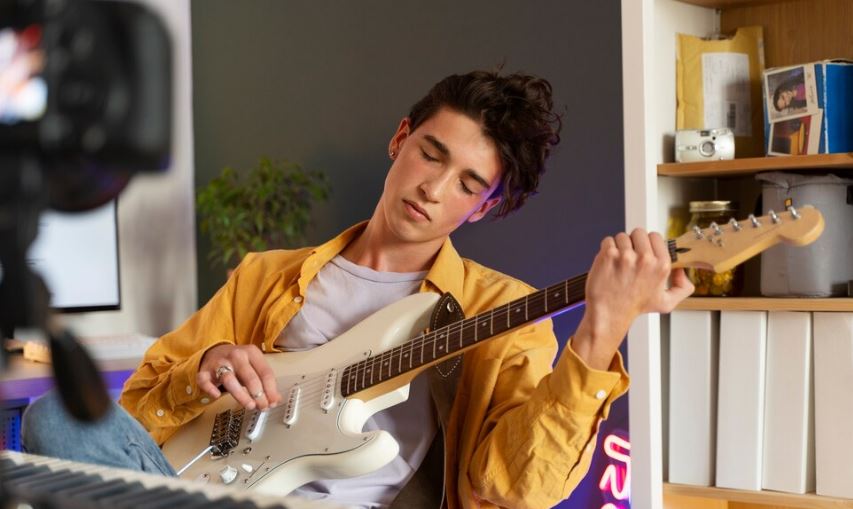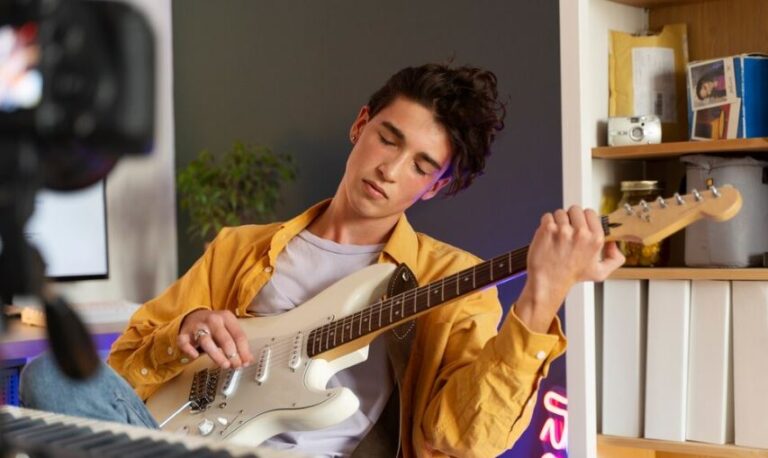It used to seem like a sci-fi fantasy to hear an AI sing your favorite song, but things have changed significantly. Platforms like Kits.AI, Media.io, and Controlla Voice have made vocal synthesis incredibly easy in recent years, enabling creators of all skill levels to use it. The tools now provide incredibly efficient and surprisingly affordable options, whether you’re a producer creating an original track with your own AI voice or a casual listener wanting Drake to sing a birthday message.
These systems replicate tonal nuances with remarkable accuracy by training AI with clean vocal samples, which are typically only 10 minutes long. Their neural voice synthesis and waveform transformation technology mimics the intricacy of human singing. kits. For example, you can upload a cappella clips to AI, and it will create a royalty-free model that can sing lyrics over any instrumental in a matter of minutes. For independent producers who require a variety of vocal choices but do not have access to session singers, this is especially helpful.
| Tool/Platform | Key Features | Best For | Official Site |
|---|---|---|---|
| Kits.AI | Voice-to-voice conversion, celeb voice presets, create covers, AI model training | Beginners & remix artists | https://www.kits.ai |
| Controlla Voice | Custom hybrid voice blending, choir generation, timbre transfer, unlimited model slots | Experimental producers & vocal designers | https://voice.controlla.xyz |
| ACE Studio | Audio-to-MIDI DAW, pitch control, breath modulation, VST plugin integration | Professional musicians | https://www.ace-studio.com |
| Synthesizer V | Visual waveform editing, emotional tone control, Vocoflex plugin for voice morphing | Sound designers & composers | https://www.dreamtonics.com |
| Media.io | No-download required, instant celeb voice covers, auto vocal extraction | Social media content creators | https://www.media.io |
With just a few clicks and Media.io, even a beginner can get AI to sing their favorite song. The AI takes care of the rest after you upload a song and choose from a variety of famous voices, including Adele and Spongebob. Additionally, the platform has an integrated vocal extractor that allows you to easily replace the original singer with the AI voice of your choice. This tool’s simplicity and efficacy make it extremely versatile for viral marketers and parody creators.
A distinct form of magic is provided by Controlla Voice. It enables the blending of vocal characteristics to create entirely new characters, as opposed to merely switching voices. The platform’s AI choir support, which automatically layers harmonies based on lyric input, was added during the October 2024 update. This innovation offers an expressive depth that traditional plugins find difficult to match, making it especially novel for soundtrack creation and fantasy-themed projects.

Composers have exact control over each note with ACE Studio, which is more production-focused. You have the ability to modify breath, change pitch, and shape entire performances note by note. Producers can maintain real-time synchronization with their workflow and streamline operations by integrating their DAW bridge plugin. For high-volume studios, its fidelity and flexibility make it incredibly resilient.
Another creative turning point has been marked by the introduction of Synthesizer V, especially its Vocoflex plugin. Vocoflex allows users to create voice morphs using visual node maps rather than directly mimicking voices. Users can audibly experiment with different timbres and transitions by hovering over curves that represent vocal textures. Additionally, the plugin supports MIDI mapping, which enables live vocal tone modulation. This technique is more akin to sound sculpting than editing.
Public personalities like Grimes have been offering their AI vocal clone for public use in exchange for royalties, which has heightened discussions about ethical usage in recent months. Her suggestion to divide earnings 50/50 with the creators signaled a change in attitude—not merely acceptance of vocal cloning, but active support for it. It was a very forward-thinking move that demonstrated how, with well-defined boundaries, AI can foster collaboration.
The emergence of AI vocalization bears a striking resemblance to the democratization of photography through smartphones from a cultural standpoint. It was once only accessible to specialists, but now anyone with a little time and curiosity can use it. Filmmakers can create emotional vocal performances for fictional characters, influencers can create humorous covers, and young artists can test ideas. The obstacles have been greatly lowered.
The tools’ creative potential is remarkably constant, despite their differences in cost and complexity. Platforms such as Emvoice create original vocal interpretations by fusing piano-roll melodies with lyrical input. By allowing public voice model sharing, Uberduck, one of the first tools in this field, has leaned toward community use. Its participation in the Grimes AI Voice Challenge serves as more evidence of how technology can advance fan interaction.
This technology is particularly encouraging for musicians who are just starting out. Creators are no longer limited to costly studio time or royalty-free vocal packs; they can now mold the precise voice they envision. Even lyrics can be fed straight into the vocal pipeline by utilizing text-to-song programs like Suno or AudioCipher’s text-to-MIDI VST. It’s a change in artistic autonomy rather than merely an improvement in workflow.
AI vocals will probably become a common layer in many music projects in the upcoming years as ethics develop and tools continue to improve their expressiveness. Their use will expand, whether they are used as animated singers in virtual concerts, real voices in independent films, or placeholders in demos. These tools can serve as the cornerstones of a more inclusive creative economy by incorporating artist-driven features and upholding clear use policies.
